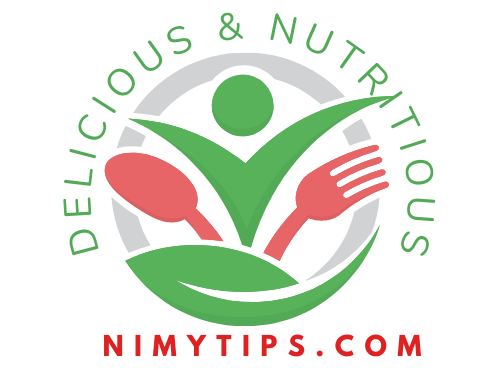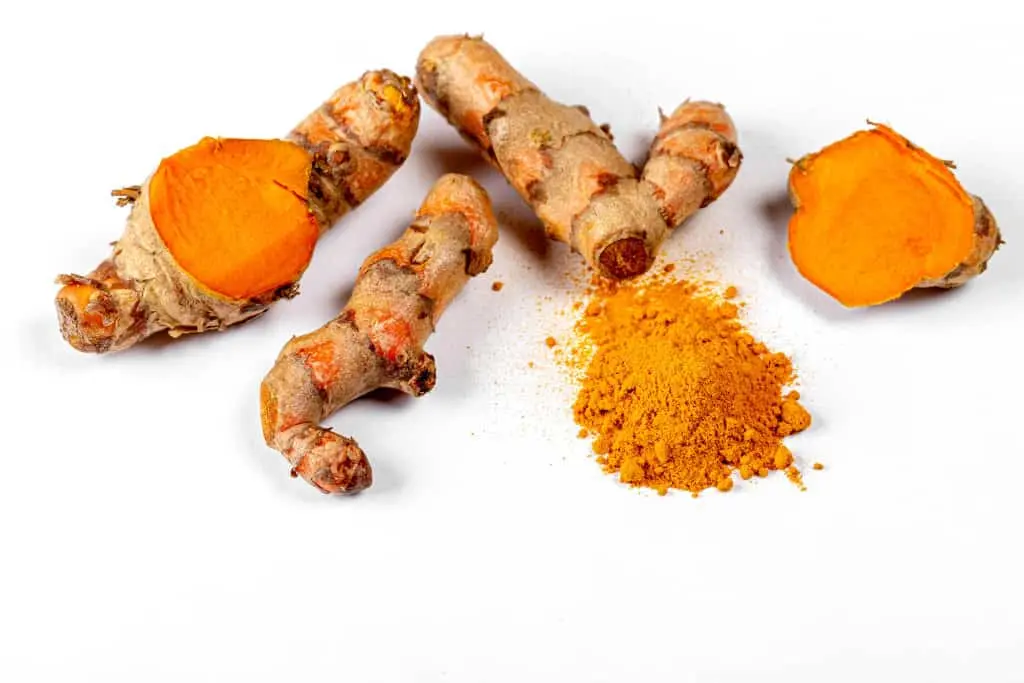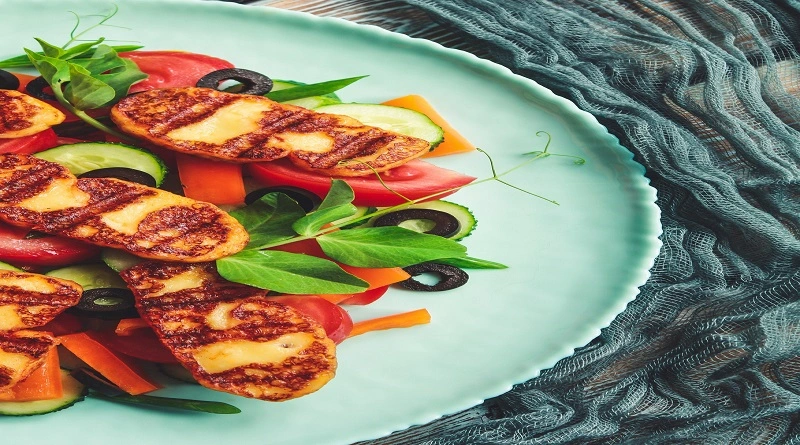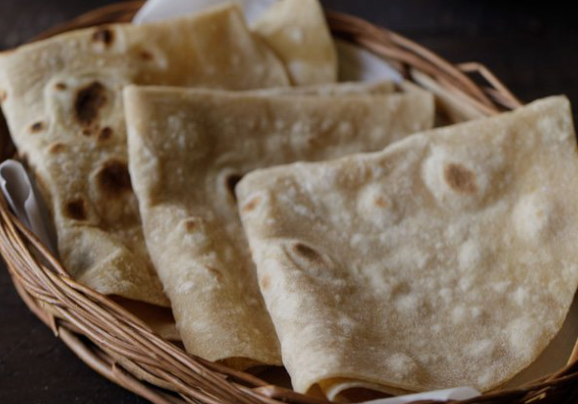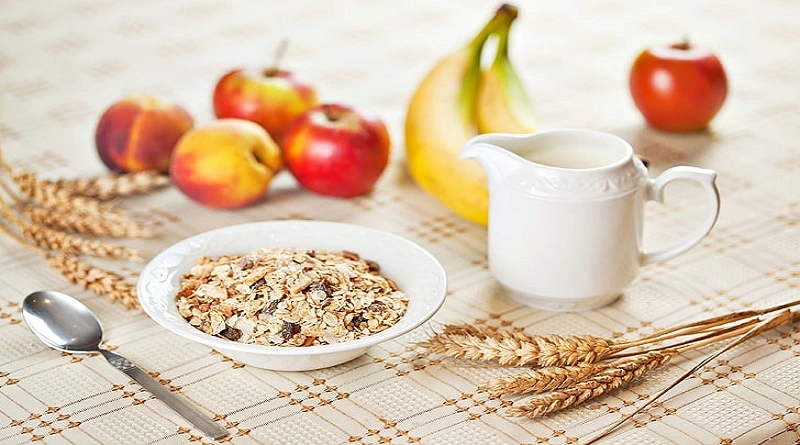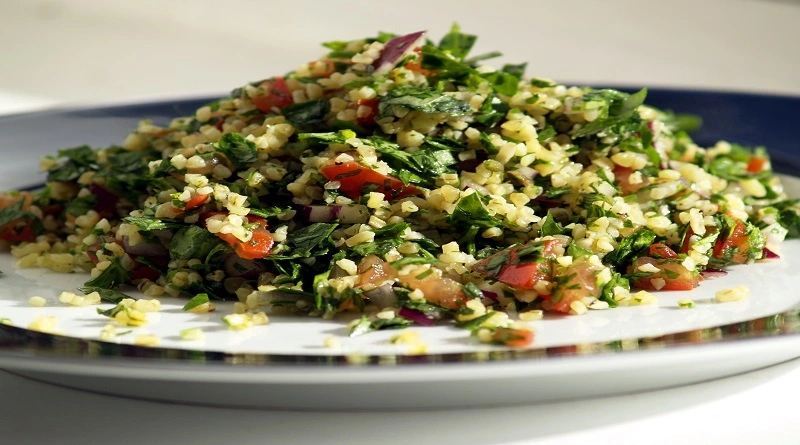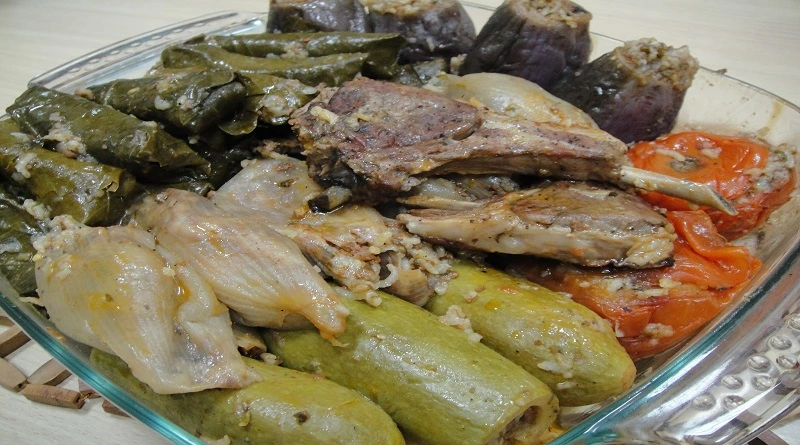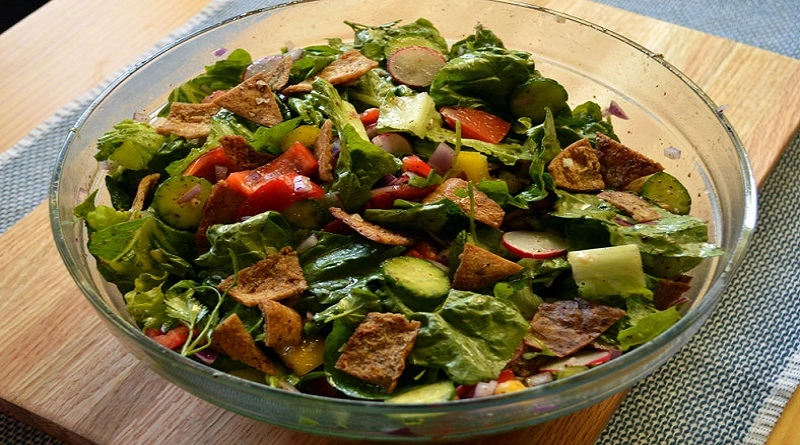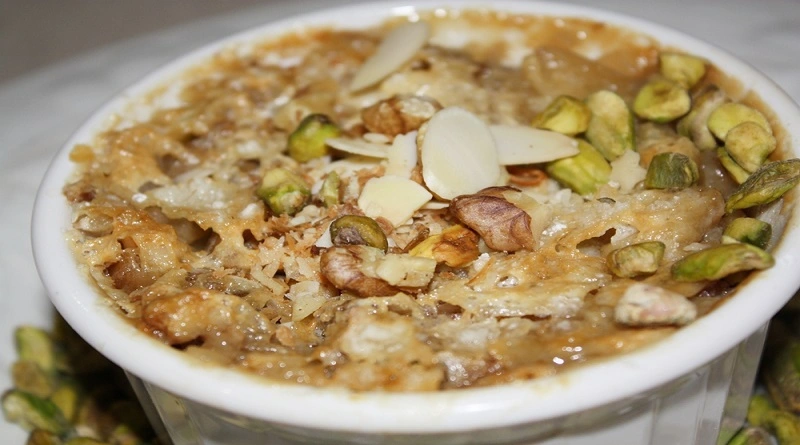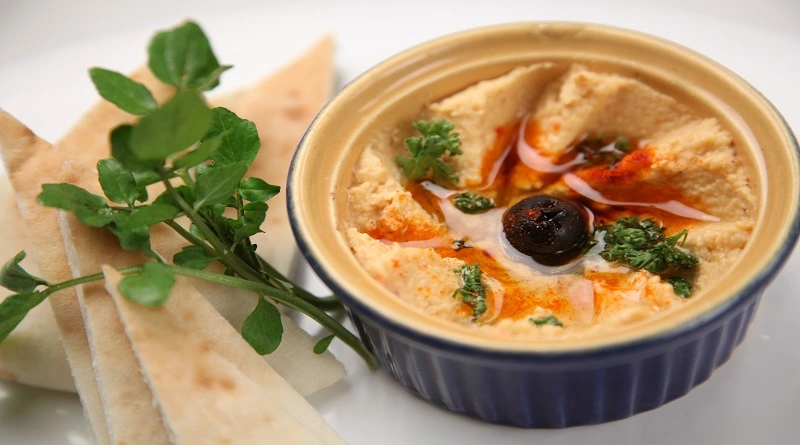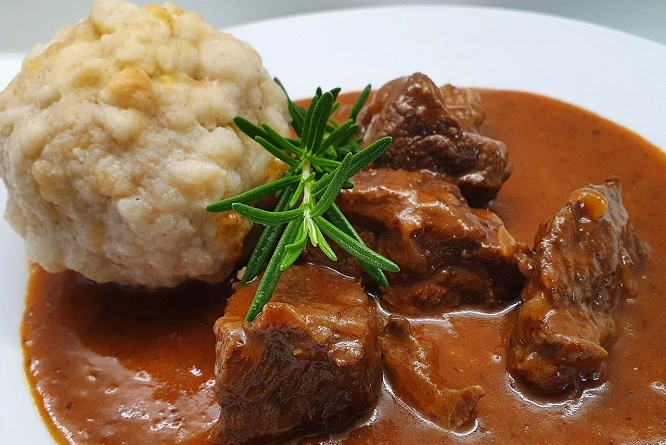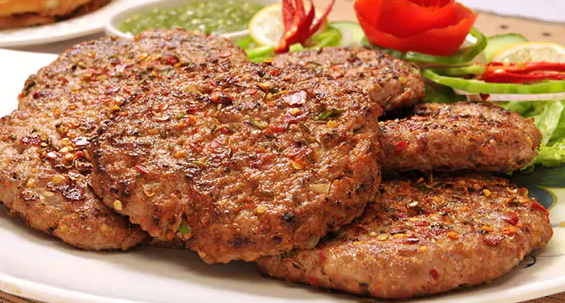Fattoush is a popular salad dish that originated in the Levant region of the Middle East, which includes Lebanon, Syria, Palestine, and Jordan. The dish has a rich history and cultural significance in the region and is enjoyed by people of all ages and backgrounds.
Fattoush is made with a variety of fresh vegetables, such as cucumber, tomatoes, and radishes, along with herbs like parsley and mint. The salad is then dressed with a mixture of olive oil, lemon juice, and sumac, a tangy Middle Eastern spice. The salad is often topped with crispy pieces of pita bread, which add a satisfying crunch to the dish.
The origins of Fattoush are somewhat unclear, but it is believed to have originated in Lebanon. The dish is often associated with Lebanese cuisine and is now enjoyed throughout the Middle East and around the world.
Fattoush has become a cultural icon in the Middle East, representing the rich history and traditions of the region. It is often served at special occasions such as weddings, feasts, and holidays, and is considered an important part of Levantine cuisine.
The dish has also gained popularity in Western countries, where it is appreciated for its fresh and healthy ingredients. It is often served in Middle Eastern restaurants or as a side dish to Mediterranean-style meals.
Overall, Fattoush is a delicious and nutritious dish that has a rich history and cultural significance in the Middle East. Its popularity has spread around the world, and it is now enjoyed by people of all backgrounds as a delicious and healthy salad option.
Introduction
Fattoush is a Middle Eastern salad that is typically made with fresh vegetables and herbs, toasted pita bread, and a tangy dressing. The salad is known for its vibrant colors and flavors and is often served as a side dish or appetizer. The name “Fattoush” is derived from the Arabic word “fatt,” which means “crush” or “pound,” and refers to the way the toasted pita bread is incorporated into the salad.
It is a refreshing and healthy salad that originates from Lebanon and has been enjoyed by people all around the world for years. In this article, we’ll take a closer look at the nutritional efficacy and provide you with a delicious recipe to try at home. This dish is among the ever liked dishes in the middle east like Baklava, Knafeh, Masgou, Kebab Karz, Mansaf, Shanklish, Shawarma, etc
Fattoush is a nutritious and healthy salad that is low in calories and high in vitamins and minerals. Here are some nutritional facts about Fattoush:
Nutritional Efficacy of Fattoush
A typical serving of Fattoush (about 100 grams) contains approximately 70-80 calories. It is rich in dietary fiber, with about 3 grams of fiber per serving, which is essential for maintaining good digestive health. Fiber also helps to lower cholesterol levels and control blood sugar levels.
The salad is also high in antioxidants, which can help protect the body against diseases such as cancer and heart disease. The vegetables in Fattoush, such as cucumbers, tomatoes, and radishes, are low in calories and high in nutrients.
Fattoush is rich in vitamins and minerals, including vitamin C, vitamin K, folate, and potassium. Vitamin C is an antioxidant that helps to protect the body against disease, while vitamin K is important for maintaining healthy bones. Potassium is essential for regulating blood pressure and maintaining fluid balance in the body.
Fattoush is a low-calorie salad that is perfect for those who are watching their weight. A typical serving of Fattoush contains only about 100-150 calories, making it an excellent option for a light lunch or dinner. Additionally, the salad is dressed with olive oil, which is a healthy source of monounsaturated fats.
Health Benefits of Fattoush
Fattoush offers a wide range of health benefits, including:
Boosts Immunity
The high vitamin C content in Fattoush helps to boost the immune system and protect the body against infections and diseases.
Promotes Weight Loss
Fattoush is a low-calorie salad that is high in fiber, making it an excellent option for those who are trying to lose weight.
Reduces Inflammation
The herbs and vegetables used in Fattoush are rich in anti-inflammatory compounds that help to reduce inflammation in the body.
Improves Digestive Health
The fiber in Fattoush helps to promote regular bowel movements and maintain healthy digestive function.
Recipe of Fattoush
Now that you know about the nutritional efficacy and health benefits of Fattoush, let’s take a look at a delicious recipe that you can try at home. The cooking time for Fattoush should take about 20-25 minutes, depending on how quickly you chop the vegetables and how many servings you are making. Once you have combined all the ingredients, the salad is ready to serve immediately.
Ingredients
- 2 cups chopped lettuce
- 1 cup chopped tomatoes
- 1 cup chopped cucumbers
- 1/2 cup chopped red onion
- 1/2 cup chopped fresh parsley
- 1/2 cup chopped fresh mint
- 1/2 cup chopped fresh cilantro
- 1/2 cup chopped radish
- 2 pieces of pita bread
- 1/4 cup olive oil
- 2 tbsp. lemon juice
- 1 garlic clove, minced
- Salt and pepper to taste
Utensils required To cook Fattoush
To cook Fattoush, you will need several utensils. Here are some of the common utensils required for making Fattoush:
- Chef’s knife: You will need a sharp chef’s knife to chop the vegetables.
- Cutting board: You will need a cutting board to chop the vegetables.
- Mixing bowl: You will need a mixing bowl to combine the salad ingredients.
- Salad spinner: You may need a salad spinner to dry the greens after washing.
- Measuring cups and spoons: You may need measuring cups and spoons to measure the ingredients accurately.
- Small bowl: You will need a small bowl to whisk the dressing together.
- Whisk: You will need a whisk to mix the dressing ingredients together.
- Serving bowl: You will need a serving bowl to transfer the Fattoush onto for serving.
Instructions
- Preheat the oven to 350°F. Cut the pita bread into bite-sized pieces and place them on a baking sheet. Drizzle the olive oil over the pita bread pieces and season with salt and pepper. Bake for 10-12 minutes or until the pita bread is crispy and golden brown.
- In a large mixing bowl, combine the chopped lettuce, tomatoes, cucumbers, red onion, parsley, mint, cilantro, and radish.
- In a small mixing bowl, whisk together the lemon juice, minced garlic, and a pinch of salt.
- Add the dressing to the salad and toss well to combine.
- Add the toasted pita bread pieces to the salad and toss again.
- Serve immediately and enjoy!
Precautions in cooking
When preparing and cooking Fattoush, there are a few precautions to keep in mind to ensure that the dish turns out delicious and safe to eat:
- Wash all produce thoroughly before using it in the salad. This will help to remove any dirt or bacteria that may be present on the vegetables.
- Use fresh ingredients whenever possible. Fresh produce will have a better flavor and texture, and will also be more nutritious than older or wilted ingredients.
- Be careful when toasting the pita bread. Make sure that the oven is preheated to the correct temperature and that the bread is not left in the oven for too long, as this can cause it to burn and become bitter.
- Store any leftovers in an airtight container in the fridge. Fattoush is best eaten fresh, but if you have any leftovers, make sure to store them properly to prevent bacteria growth and spoilage.
- If you are using store-bought pita bread, check the expiration date to ensure that it is still fresh and safe to eat.
By following these precautions, you can ensure that your Fattoush is not only delicious but also safe to eat.
Side Effects of fattoush
Fattoush is generally considered a healthy and safe dish to consume. However, as with any food, there may be some side effects to be aware of:
Allergic reactions: Some people may be allergic to certain ingredients in Fattoush, such as wheat in the pita bread or sesame in the dressing. If you have a known allergy to any of these ingredients, it is best to avoid Fattoush.
Digestive issues: It contain a variety of fresh vegetables and herbs, which can be difficult for some people to digest. This can lead to bloating, gas, and discomfort, particularly if you have a sensitive digestive system.
Sodium content: The dressing in Fattoush often contains salt, which can contribute to a high sodium intake if consumed in large amounts. This can be a concern for people with high blood pressure or other heart health issues.
Caloric intake: While it is generally considered a low-calorie dish, the addition of fried pita chips or high-calorie dressings can increase its caloric content. It is important to be mindful of portion sizes and the ingredients used to make Fattoush to ensure it fits within your overall caloric goals.
Overall, it is a healthy and nutritious dish that is enjoyed by many people around the world. However, it is important to be aware of any potential side effects and consume it in moderation as part of a balanced diet.
FAQs
Is Fattoush vegan-friendly?
Yes, it is typically made with only plant-based ingredients and is suitable for vegans.
Can I substitute the pita bread with another type of bread?
Yes, you can use any type of bread that you prefer, but pita bread is traditionally used in Fattoush.
How long will the leftovers keep in the fridge?
It is best eaten fresh, but you can store leftovers in an airtight container in the fridge for up to 2-3 days.
Can I add other vegetables to the salad?
Yes, you can add any vegetables that you like to the salad. Some common additions include bell peppers, carrots, and celery.
Can I make the dressing ahead of time?
Yes, you can make the dressing ahead of time and store it in the fridge until you’re ready to use it. Just give it a quick whisk before adding it to the salad.
References
- “The Arabian Nights Cookbook: From Lamb Kebabs to Baba Ghanouj, Delicious Homestyle Arabian Cooking” by Habeeb Salloum.
- “Arabian Delights: Recipes & Princely Entertaining Ideas from the Arabian Peninsula” by Amy Riolo.
- “The Complete Middle Eastern Cookbook” by Tess Mallos.
- “Classic Lebanese Cuisine: 170 Fresh and Healthy Mediterranean Favorites” by Kamal Al-Faqih.
- “The Food of Oman: Recipes and Stories from the Gateway to Arabia” by Felicia Campbell.
- “The Lebanese Kitchen: Quick and Healthy Recipes” by Monique Bassila Zaarour.
- “Persiana: Recipes from the Middle East & Beyond” by Sabrina Ghayour.
- “The Jewelled Kitchen: A Stunning Collection of Lebanese, Moroccan and Persian Recipes” by Bethany Kehdy.
- “Saha: A Chef’s Journey Through Lebanon and Syria” by Greg Malouf.
- “The New Middle Eastern Vegetarian: Modern Recipes from Veggiestan” by Sally Butcher.
- https://ar.wikipedia.org/wiki/%D9%81%D8%AA%D9%88%D8%B4
